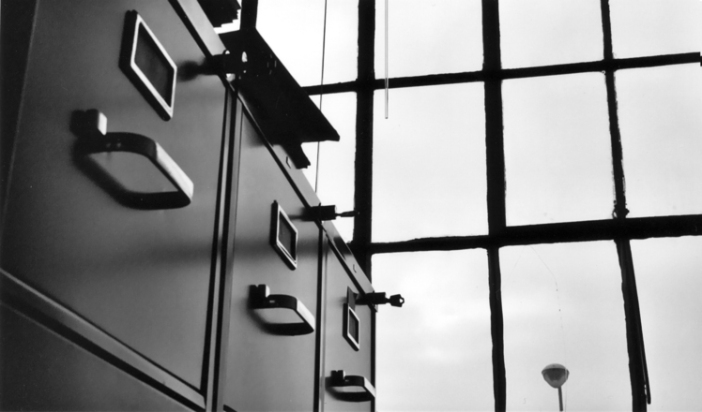With some controversy, President-elect Donald Trump has been assembling his new Cabinet. But new cabinets are for kitchens, right? Why do we call these advisors, who head the executive departments of the US government, a president’s Cabinet?
Cabinet members
In the 16th century, there were two main meanings of cabinet. The first, and earliest, cabinet named a “case” that kept secret valuables, like jewels or letters, safe. This cabinet, later ornamental and fitted with shelves and drawers, became the furniture in our kitchens, bathrooms, TV rooms, and offices.
The other cabinet named a “small, private chamber.” Leaders would meet with political advisors in such places, apparently, to discuss the most sensitive and confidential matters. Over the first half of the 1600s, and by the metaphorical process known as metonymy, cabinet became the official name for the people who met in a such a room to advise a leader.

Cabinet-makers
The Oxford English Dictionary credits the influential polymath Francis Bacon with the earliest recorded use of cabinet in a political context. In “Of Counsel,” an essay first published in 1612, Bacon mused on some of the challenges (“inconveniences”) of giving counsel to a ruler, including the loss of secrecy, undermining of authority, and the risk of betrayal. He then notes:
For which inconveniences, the doctrine of Italy, and practice of France, in some kings’ times, hath introduced cabinet counsels; a remedy worse than the disease.
Bacon was no fan, it seems, of cabinets. But by the time he acceded the English throne in 1625, King Charles is said to have formally introduced a “Cabinet Council” for additional, high-level, and possibly even more secret advisement alongside his Privy Council.
Now, the word cabinet doesn’t explicitly appear in the US Constitution. Article II, Section 2 does state the President
may require the Opinion, in writing, of the principal Officer in each of the executive Departments, upon any Subject relating to the Duties of their respective Offices.
On September 11, 1789, George Washington sent his nominations for four such officers to the Senate, which it approved: Secretary of State Thomas Jefferson, the first-to-be-confirmed Secretary of the Treasury Alexander Hamilton, Secretary of War Henry Knox, and Attorney General Edmund Randolph. (Some include Postmaster General Samuel Osgood in this body.)
But it was James Madison, as far as we know, who first referred to these men as “the president’s cabinet,” drawing on what was by then a well-established term in British government. The presidential Cabinet has since expanded, including some name changes, to 15 departments. The most recent department in the cabinet, the Department of Homeland Security, was formed following a different September 11.
Inside the cabinet
What do we know about the history of the word cabinet? Scholars generally take cabinet to be a diminutive form of cabin: “a little cabin.” Indeed, cabin is no secret in the shape or sound of the word cabinet, but our associations of the word with cupboards and government are so strong that we often don’t connect it to those shelters we escape to in the woods.
Cabin, originally a “temporary shelter” in the late 1300s, derives from the French cabane, “hut,” in turn from Late Latin capanna. Capanna, whose further origins are a mystery, also yields the Spanish cabana. A few have claimed it’s Celtic or Illyrian. And some note cabine referred to a “room for gambling” in an old French dialect. Talk about shady, backroom dealings.
But how do we reconcile cabinet, the small room, with cabinet, the case and furniture? The French source of cabinet may have been influenced by the Italian gabinetto, a “little cage or basket,” hence a kind of “chest” or “closet.” This gabinetto is a diminutive form of gabbia, which may be ultimately rooted in the Latin cavus, “hollow,” origin of cave and even cage.
And no cabinet member ever wants to be boxed in or in the dark in a president’s administration. As Francis Bacon observed in “Of Counsel”: “The greatest trust between man and man is the trust of giving counsel.”
The president is going to be the Chief Executive. I have slightly different take on it, I will call him the Chef Executive and his cabinet will be made up of the driest, oldest, combination of bread, rolls, donuts, biscuits, and whatever’s lying around the kitchen cabinet. When he gets all done, he will have chosen his assortment and we will have made his own cabinet pudding. Some call it bread pudding but it’s whatever was unusable and lying about the kitchen cabinet
LikeLike
Follow me modabakim.wordpress.com
LikeLike
Thanks for sharing President cabinet idea.
LikeLiked by 1 person
I think that Stephen King was right. The cabinet was chosen to resemble the Politburo West. All these “people” he picked, especially Jeff Sessions, Manafort, a long list of others, were meeting with Russian SPIES and doing Russians’ bidding before Trump was elected. NOW he thinks he can have a total psychological meltdown of nuclear proportions just bc people are finding out what he’s been doing all along. And Putin never even being his friend though ALL of it but he’s still acting like the sun rises and sets at Putin’s request.
I don’t get how ANYone, who claims he DISlikes Communism & Socialism can be so DUMB. It’s called Union of Soviet SOCIALIST Republic. What’s he think a socialist is?
I refuse to join in with trying to push that over the brink of sanity. I know he’s capable of doing even worse thing than what he’s already done.
LikeLike